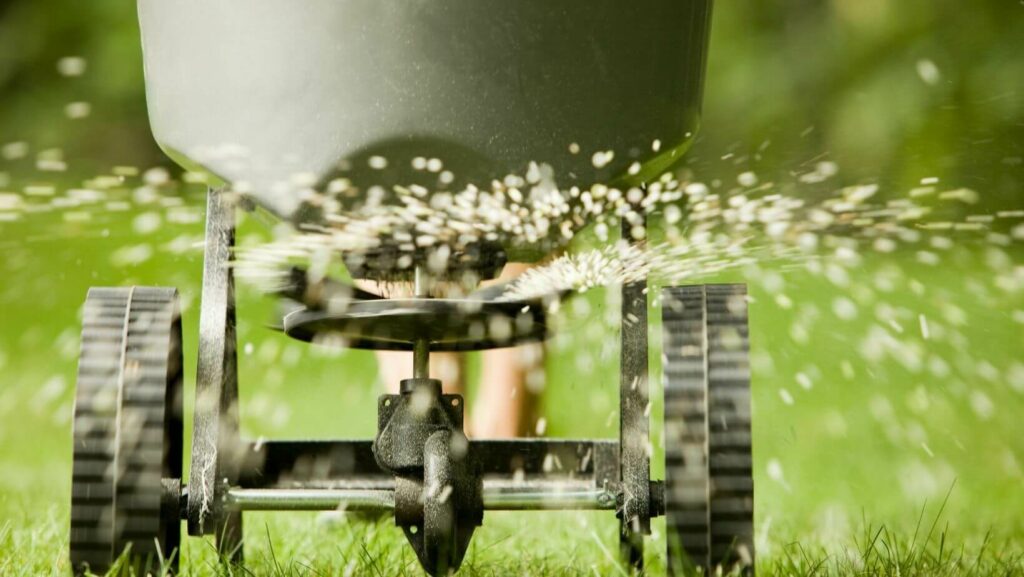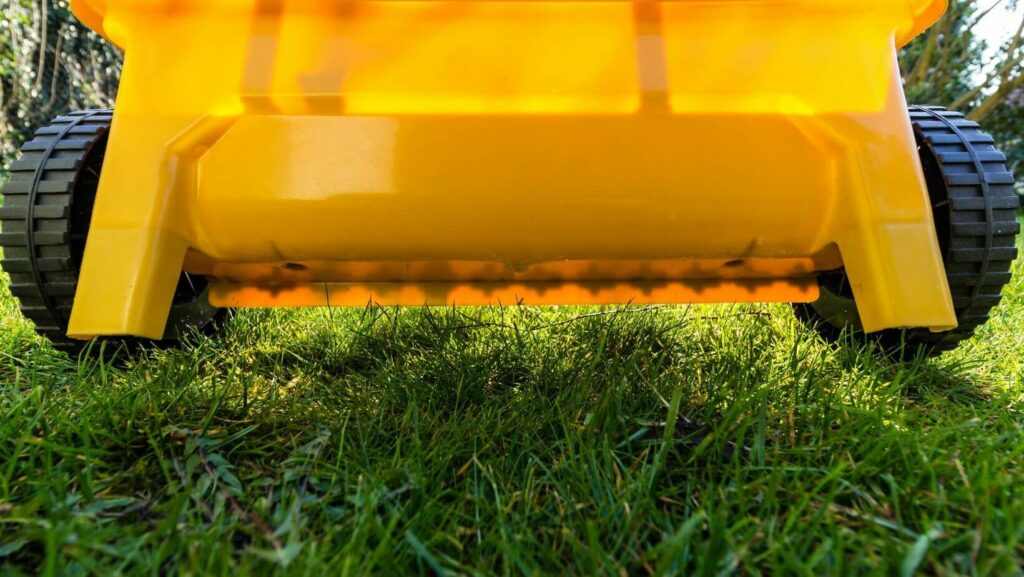Achieving a lush, resilient lawn doesn't have to be a guessing game. With fall just around the corner, now is the ideal time to ensure your lawn gets the tailored care it deserves. Turfcor Lawn & Tree Care's specialized Fall Fertilization services are designed to provide your turf with the exact nutrients it needs to brave the winter and flourish in the spring. Why leave things to chance when experts are just a call away? Choose Turfcor and witness firsthand how professional care can transform your outdoor space. Let's nurture your lawn together—reach out today and let Turfcor make your dream lawn a reality.
As the balmy summer days give way to the brisk chill of fall, our attention often shifts from our lawns to the approaching holidays and cozy indoor activities. However, this transitional period is a crucial time for lawn care. Fall fertilization is like an investment, ensuring that when winter ends, our lawns bounce back vibrant and green. While the approach to lawn care may differ from the summer months, understanding the unique needs of your lawn during the fall is paramount. In this article, we’ll dive deep into the dos and don’ts of fall fertilization, setting you on a path to a thriving lawn come spring.
Why Fall Fertilization Matters
 When we think of fall, we might envision pumpkins, cozy sweaters, and leaves changing color, but it’s also a critical season for our lawns. As the temperature drops, grass doesn’t just go dormant and stop; it’s working underground, strengthening its roots and storing nutrients. Fertilizing in the fall supports this process, providing the grass with essential nutrients it needs to withstand winter’s harsh conditions. Think of it as giving your lawn a hearty meal before its long winter nap. By feeding it now, you’re not only bolstering its current health but ensuring a robust comeback in the spring. Without this vital step, your lawn could struggle come warmer weather, looking less vibrant and being more susceptible to diseases and pests. The benefits of fall fertilization are long-lasting, setting the groundwork for a healthier and more resilient lawn year-round.
When we think of fall, we might envision pumpkins, cozy sweaters, and leaves changing color, but it’s also a critical season for our lawns. As the temperature drops, grass doesn’t just go dormant and stop; it’s working underground, strengthening its roots and storing nutrients. Fertilizing in the fall supports this process, providing the grass with essential nutrients it needs to withstand winter’s harsh conditions. Think of it as giving your lawn a hearty meal before its long winter nap. By feeding it now, you’re not only bolstering its current health but ensuring a robust comeback in the spring. Without this vital step, your lawn could struggle come warmer weather, looking less vibrant and being more susceptible to diseases and pests. The benefits of fall fertilization are long-lasting, setting the groundwork for a healthier and more resilient lawn year-round.
The Right Types of Fertilizers for Fall
 Navigating the world of fertilizers can feel like a maze, especially when the season changes. Not all fertilizers are created equal, and what works in summer might not be the best fit for fall. As the grass prepares for winter, its needs shift, and understanding these needs can make all the difference. The fall season calls for fertilizers that emphasize root growth and disease resistance.
Navigating the world of fertilizers can feel like a maze, especially when the season changes. Not all fertilizers are created equal, and what works in summer might not be the best fit for fall. As the grass prepares for winter, its needs shift, and understanding these needs can make all the difference. The fall season calls for fertilizers that emphasize root growth and disease resistance.
While high-nitrogen mixes are popular in spring for lush, green growth, fall lawns benefit more from higher potassium content, aiding in overall plant hardiness and stress resistance. Whether you opt for organic solutions, which release nutrients slowly over time, or the more immediate release of synthetic options, the key lies in choosing a blend that supports the lawn’s fall-specific requirements. By selecting the right type of fertilizer, you’re giving your lawn the precise nourishment it craves to thrive throughout winter and burst back to life in spring.
Professional Fall Fertilization
Application Rates and Techniques
Even with the right fertilizer, its effectiveness depends on proper application. Fall fertilization isn’t just about what and how much you use, but also how it’s distributed. A “less is more” approach is beneficial. Avoid assuming that more fertilizer equals a healthier lawn, as excessive use can cause harm.
Always prioritize reading and strictly following the label’s instructions. It provides the roadmap for optimal application rates, ensuring that your lawn gets just the right amount of nutrients. Equally important is ensuring an even spread.
Uneven application can lead to patches of “burned” grass, where an excess of fertilizer damages the turf. After applying, it’s a good practice to water your lawn lightly. This process, often referred to as “watering-in,” helps move the fertilizer into the soil, facilitating effective nutrient absorption. Remember, while our aim is a lush lawn, over-fertilization can backfire, making grass more susceptible to pests, diseases, and winter damage. The art lies in balance, and mastering it sets the foundation for a flourishing lawn.
Timing is Key: When to Fertilize
 In the realm of lawn care, timing isn’t just about the calendar; it’s about understanding the nuanced interplay of various factors that influence your lawn’s health. At the forefront of these is soil temperature. Unlike air temperature, which can fluctuate rapidly, soil temperature offers a steadier measure, playing a pivotal role in nutrient uptake. Fertilizing when the soil is at the right temperature ensures that the grass roots effectively absorb the provided nutrients.
In the realm of lawn care, timing isn’t just about the calendar; it’s about understanding the nuanced interplay of various factors that influence your lawn’s health. At the forefront of these is soil temperature. Unlike air temperature, which can fluctuate rapidly, soil temperature offers a steadier measure, playing a pivotal role in nutrient uptake. Fertilizing when the soil is at the right temperature ensures that the grass roots effectively absorb the provided nutrients.
Early to mid-fall typically presents the optimal window for fertilization. This is when the soil temperature is just right, and grasses are in their active growth phase, prepping for winter. While it might be tempting to squeeze in a late-fall fertilization session, doing so can be risky. Late applications can lead to new growth that may not harden off in time for winter, making the lawn vulnerable to frost damage.
To nail the timing, familiarize yourself with local frost dates. Aligning your fertilization schedule with these dates ensures that the grass benefits most from the nutrients without the looming threat of early frost. You want to also keep a keen eye on weather forecasts. Fertilizing just before a heavy rainfall can wash away your efforts, making the application ineffective and potentially contributing to nutrient runoff. While the fall season offers a crucial window for fertilization, understanding and capitalizing on the right moment within that window is key to maximizing benefits.
Cultivating a Resilient Lawn for Spring
 The path through the intricacies of fall fertilization, while complex, promises a reward of a vibrant and thriving lawn come springtime. This seasonal care is more than just a routine—it’s a strategic preparation for the lush year ahead. With the right balance of nutrients, precise application, and timely care, we set the stage for a lawn that can face winter’s challenges and emerge even brighter in the spring.
The path through the intricacies of fall fertilization, while complex, promises a reward of a vibrant and thriving lawn come springtime. This seasonal care is more than just a routine—it’s a strategic preparation for the lush year ahead. With the right balance of nutrients, precise application, and timely care, we set the stage for a lawn that can face winter’s challenges and emerge even brighter in the spring.
While the journey to a perfect lawn might seem daunting, remember that guidance is always available. Companies like Turfcor Lawn & Tree Care specialize in ensuring that lawns get the best care possible, making the process smoother and more effective. So, as you consider the next steps for your lawn this fall, remember that you’re not only investing in its immediate health but also its future beauty. And with the right support and resources, that investment will surely yield stunning, long-lasting results.
